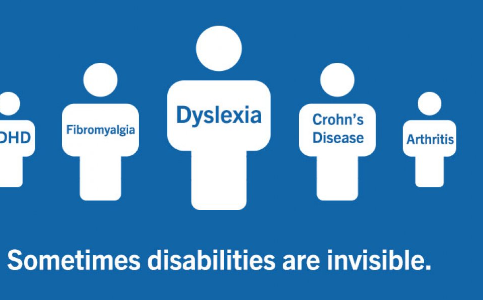Our body is something that we don’t choose, yet its state is deeply connected to our mental well-being. People with disabilities never chose to have them, but even in 2023, these people face many illness-related social difficulties.
The struggle becomes even tougher if the disability is invisible to people around. Feeling unwell goes unnoticed by most and there is no help to come. That’s why today we’ll try to increase invisible disability awareness. Read on to understand what conditions fall into this category with examples and get acquainted with modern ways to reduce their negative impact on life.
What Is an Invisible Disability?
Invisible disabilities are a group of medical conditions that aren’t obvious from the start to people around those who suffer from them. People with this type of diagnosis don’t have common attributes that we associate with disease. They have no wheelchairs or canes, but the disease deeply affects their lives.
The list of these illnesses is extensive. According to a recent study by Disabled-World.com about 20% of the US population suffers from invisible health issues.
Examples of Invisible Disabilities
Invisible illnesses include both physical and mental conditions. The latter include dementia, autism spectrum disorder, ADHD, dyslexia, and other learning and cognitive disorders.
The list of physical invisible diseases consists of rheumatoid arthritis, migraines, diabetes, and chronic pain. Most of these illnesses are chronic by nature, they can’t be cured. Painkillers, physical treatment, and medication may hide or numb the symptoms, but they can’t solve the problem completely.
How Do People with Invisible Illnesses Feel?
Society is often hostile to social groups for no reason. Even in these tolerant times, people with invisible disabilities face frustration, isolation, and loneliness. This further results in fear of becoming close to others.
Hiding invisible disabilities only makes people who suffer from them more anxious and isolated. Needless to explain, how this may affect employment and education. As naive as it may sound, sharing the problem is a part of solving it. Invisible disability awareness and some compassion would help to create a bit more inclusive and kind society for all of us.
Frequent Misconceptions Associated with Hidden Disabilities
The term ‘invisible disability’ emerged not that long ago and thus it is surrounded by myths and misconceptions. Let’s discuss some of the most common ones.
People With Hearing Disabilities Always Can Read Lips
Unfortunately, reading lips is not a default option for people with hearing loss. Many deaf people communicate with signs, which are not universal and vary across the globe.
Depression Is Just Feeling Sad or Not Motivated Enough
This misconception has been fading in recent years, but there are still many people who think that depression = sadness. Clinical depression is a complicated mental disease that requires long and tiresome treatment.
Hiring a Person with a Disability Lowers Productivity
It might be difficult to realize, but physical and mental issues don’t affect productivity that much. Many researchers state that people with disabilities take fewer days off and stay at work longer than their colleagues.
Learning Disorders Are Only Academic
Dyslexia, ADHD, and different cognitive disorders affect the socialization of a child and affect their future personality development.
How Can We Help?
Changing society is difficult, but there are still things we could do to help people with invisible disabilities. One of them is introducing them to mobile safety apps.
Modern safety applications have lots of features to simplify the life of a person with a hidden disease. These include:
- GPS tracking
- Emergency call buttons
- Speech-to-text detectors
- Insulin intake reminders
How Can AllsWell Alert Help People with Invisible Disabilities?
Applications like AllsWellAlert are great assistants in dealing with invisible disabilities. AllsWell Alert has a panic button, inactivity monitoring, and accurate GPS tracking. In case of an emergency, the app lets the user automatically send their location to selected contacts. How? Inactivity monitoring sends automatic notifications when the person is absent for too long. With this app people with disabilities may be sure that help is always ready to arrive.
Want to try it out? AllsWell Alert has a 14-day free trial, so download it now!


